Periodontal Disease and Biofilm Diseases of the Mouth
CE Available: 29
CME Coming Soon!
Modules
Presented by: Dr. Rachaele Carver
CE Available: 1
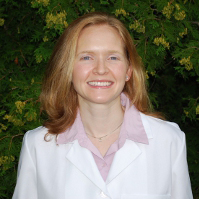
Bio
Dr. Rachaele is a biological dentist and a certified health coach who practices integrative whole body dentistry focusing on the root cause of dental disease.
Presented by: Tom Nabors, DDS
CE Available: 1
Bio
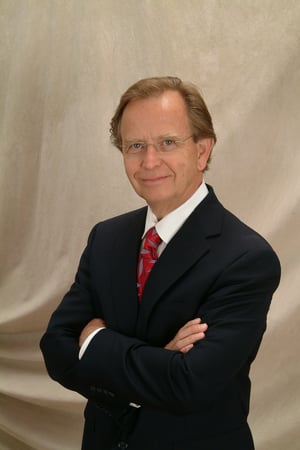 Dr. Nabors has lectured extensively for many years to numerous universities, numerous dental state meetings and associations, and physician groups on the subjects of the Oral / Systemic Link, molecular diagnostics, and its practical application to periodontal disease, peri-implant diseases, genetics, risk management, classification and therapy.
Dr. Nabors has lectured extensively for many years to numerous universities, numerous dental state meetings and associations, and physician groups on the subjects of the Oral / Systemic Link, molecular diagnostics, and its practical application to periodontal disease, peri-implant diseases, genetics, risk management, classification and therapy.
His interest in microbiology, genetics, and molecular diagnostics spans 30 years. His experience in the clinical application of DNA-PCR (nucleic acid) tests and the founder of a molecular diagnostics CLIA certified clinical laboratory makes him uniquely qualified as an educator. He has published a number of articles related to molecular diagnostics, its clinical application, and the use of whole saliva as a diagnostics platform.
Dr. Nabors saw the need for earlier and more accurate disease detection and management for periodontal infections. And, with the advancement of molecular diagnostics in medicine, he founded Oral DNA Labs, Inc. with the help of an experienced team in 2008.
Today, he is retired from Oral DNA and is not affiliated with the company. However, he continues his interest in helping dentists and their teams apply the advantages of molecular diagnostics to the benefit of their patients.
Presented by: Garth Ehrlich, PhD
CE Available: 1
Bio
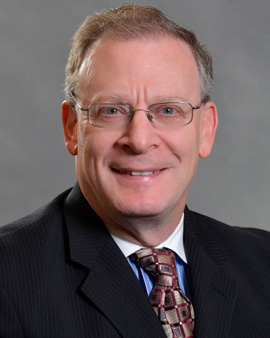 Dr. Ehrlich is the executive director of three Research Centers of Excellence in the Institute for Molecular Medicine and Infectious Diseases: the Center for Advanced Microbial Processing (CAMP), the Center for Genomic Sciences (CGS), and the Center for Surgical Infection and Bacterial Biofilm. He also serves as executive director of the Genomics Core Facility, which is a University-wide sequencing and bioinformatics service core.
Dr. Ehrlich is the executive director of three Research Centers of Excellence in the Institute for Molecular Medicine and Infectious Diseases: the Center for Advanced Microbial Processing (CAMP), the Center for Genomic Sciences (CGS), and the Center for Surgical Infection and Bacterial Biofilm. He also serves as executive director of the Genomics Core Facility, which is a University-wide sequencing and bioinformatics service core.
Presented by: Duane Keller, DMD
CE Available: 1
Bio
Duane C. Keller graduated from Washington University School of Dental Medicine in 1976 and has maintained a successful private practice in St. Louis, MO since then. In additional to general dentistry, Dr. Keller works with physicians and physical therapists to provide non‐surgical treatment for TMD patients in chronic pain. Dr. Keller also works with physicians whose patients have symptoms of periodontal disease. These partnerships have been especially valuable for patients at risk for or diagnosed with systemic illnesses. Dr. Keller has been lecturing to national and international audiences for over twenty years. He has published more than 35 articles in professional journals, most recently an article in The Journal of Clinical Dentistry, and has patented numerous dental appliances and treatment methodologies. In 2004, the FDA cleared his Perio Tray® for the placement of solutions in periodontal pockets.
Presented by: Bill Domb, DMD
CE Available: 1
Ozone has been used in medicine and dentistry for many years to treat and prevent illnesses as well as manage cross-contamination. It is focused primarily on dental office settings, although much may be applicable in other healthcare and even home settings. Thanks to Dr. Marty Jablow, Dr. Dennis Mihalka, Dr. Tim Rainey. Dr. Mark Malterud, Dr. Robert Walker, and Dr. Craig Young for their contributions and suggestions. Ozone can kill all pathogenic microbes, as far as we know: bacteria, fungi, and viruses. There is no reason to expect that O3 would not be able to mange Coronavirus similarly.
Bill Domb, DMD
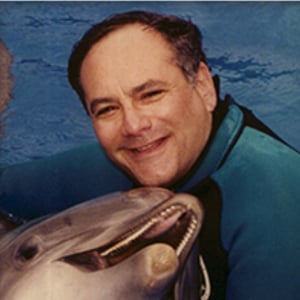 Dr. Bill Domb is a founding member of the American Academy for Oral Systemic Health, and the producer of the website ZT4BG.com. He founded the International Association of Ozone in Healthcare, currently its immediate past president.
Dr. Bill Domb is a founding member of the American Academy for Oral Systemic Health, and the producer of the website ZT4BG.com. He founded the International Association of Ozone in Healthcare, currently its immediate past president.
He recently retired from busy high-tech practice in Southern California where his focus was on aesthetics but the practice has a number of other active centers such as headache-TMD, fresh breath, anesthesia and sedation dentistry, implantology, underlying biochemistry analysis, and minimally interventive/preventive services and the many uses of ozone. Bill is an international expert, speaker and researcher on the many uses of Ozone.
Presented by: Susan Maples, DDS
CE Available: 1
Part 1: Bi-Directional Effects of Diabetes on Periodontal Disease
Part 2: Insulin Resistance and Pre-Diabetes
Bio
Dr. Susan Maples leads a successful, total health, insurance-independent dental practice in Holt, Michigan. She brings preventive and restorative dental expertise, a passion for mouth-body total health, a master’s degree in business/marketing, and 30+ years of experience in private practice. She is the creator and founder of Total Health Academy, a complete online solution for dental teams to integrate all aspects of Total Health Dentistry, author of BlabberMouth! 77 Secrets Only Your Mouth Can Tell You To Live a Healthier, Happier, Sexier Life, developer of the Hands-On Learning Lab™ and SelfScreen.net. Susan currently serves on the Governing Board of the American Academy of Oral Systemic Health (AAOSH).
AVAILABLE FRIDAY, DECEMBER 18, 2021
Presented by: Tom Nabors, DDS
CE Available: 1
Bio
 Dr. Nabors has lectured extensively for many years to numerous universities, numerous dental state meetings and associations, and physician groups on the subjects of the Oral / Systemic Link, molecular diagnostics, and its practical application to periodontal disease, peri-implant diseases, genetics, risk management, classification and therapy.
Dr. Nabors has lectured extensively for many years to numerous universities, numerous dental state meetings and associations, and physician groups on the subjects of the Oral / Systemic Link, molecular diagnostics, and its practical application to periodontal disease, peri-implant diseases, genetics, risk management, classification and therapy.
His interest in microbiology, genetics, and molecular diagnostics spans 30 years. His experience in the clinical application of DNA-PCR (nucleic acid) tests and the founder of a molecular diagnostics CLIA certified clinical laboratory makes him uniquely qualified as an educator. He has published a number of articles related to molecular diagnostics, its clinical application, and the use of whole saliva as a diagnostics platform.
Dr. Nabors saw the need for earlier and more accurate disease detection and management for periodontal infections. And, with the advancement of molecular diagnostics in medicine, he founded Oral DNA Labs, Inc. with the help of an experienced team in 2008.
Today, he is retired from Oral DNA and is not affiliated with the company. However, he continues his interest in helping dentists and their teams apply the advantages of molecular diagnostics to the benefit of their patients.
Presented by: Barbara Tritz, RDH, BS, MSB
CE Available: 1
Webinar Date: Friday, October 16, 2020 @ 12pm CT
Tooth decay is at epidemic levels worldwide and periodontal disease affects half our population. The oral microbiome starts off healthy in infants, but things rapidly change. Why do we have so much dental disease? What we, as a dental profession are doing does not seem to be working properly. It may be time for a paradigm shift.
Take a deep dive into the oral microbiome through the lens of a phase contrast microscope and see the pathogens. Instead of focusing on killing them, let us nourish them and enhance the good bugs. We can change the oral microbiome flora to encourage health. The mouth and gut bacterial are intimately connected so we must go beyond the scaler and investigate how food, supplements, breathing and natural products can be used to heal the oral cavity and the gut microbiome and finally have true systemic wellness.
Learning Objectives
1. Explain how prebiotics help the oral microbiome.
2. List three foods to recommend the are rich in prebiotics
3. Explain how Probiotics help the oral microbiome
4. List three foods rich in Probiotics.
5. Explain how oral microbial dysbiosis occurs.
6. List three new adjunctive tools to help patients achieve health.
Three things you can immediately implement
1. Nitric oxide testing
2. Recommend supplements, prebiotics, and probiotics
3. Add Bio-Botanicals, ozone products, baking soda, and all other similar products proven to be effective as homecare recommendations
Barbara Tritz, RDH, BS, MSB
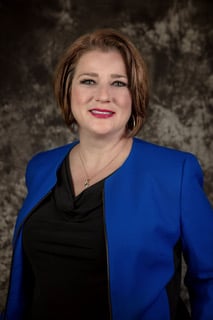
Specialist in Orofacial Myofunctional Therapy
With more than 40 years of clinical experience as is a registered dental hygienist and periodontal therapist, Barbara K. Tritz’s goal is to inspire oral health and wellness through education by working with world class dental teams to transform the way we look at the oral-systemic connection. Employing and constantly learning both traditional and novel-nontraditional skills allows her to offer the most comprehensive oral health and preventative care that enables patients to be truly healthy. She currently practices in the office of Green City Dental in Edmonds, WA, is the owner of Washington Oral Wellness in Kirkland, WA, and is also a practicing orofacial myofunctional therapist. Known as the Queen of Dental Hygiene, her continual efforts on the forefront of biological dentistry and integrative health brought her to utilizing the Biocidin family of products. Biocidin and the oral line, Dentalcidin, have become essential tools to effectively support her patients holistically in the office and while at home.
Presented by: Erinne Kennedy DMD, MPH, MMSc
CE Available: 1
Webinar Date: Friday, August 7, 2020 @ 11am CT
Over the last century, researchers uncovered the idea that bacteria causing tooth decay can be transferred vertically from mother or caregiver to child as well as horizontally between groups of people. Using the SillHa Oral Wellness System, we will review cases to identify similarities between saliva data and disease presentation of families. Together we will discuss innovative strategies for families to prevent tooth decay.
You will learn
- Review the research on how we understand the transmission of dental caries vertically and horizontally.
- Conduct a case review of saliva data of two families with similar saliva and disease presentations.
- Discuss and identify innovative strategies for families to reduce their risk for tooth decay.
Erinne Kennedy DMD, MPH, MMSc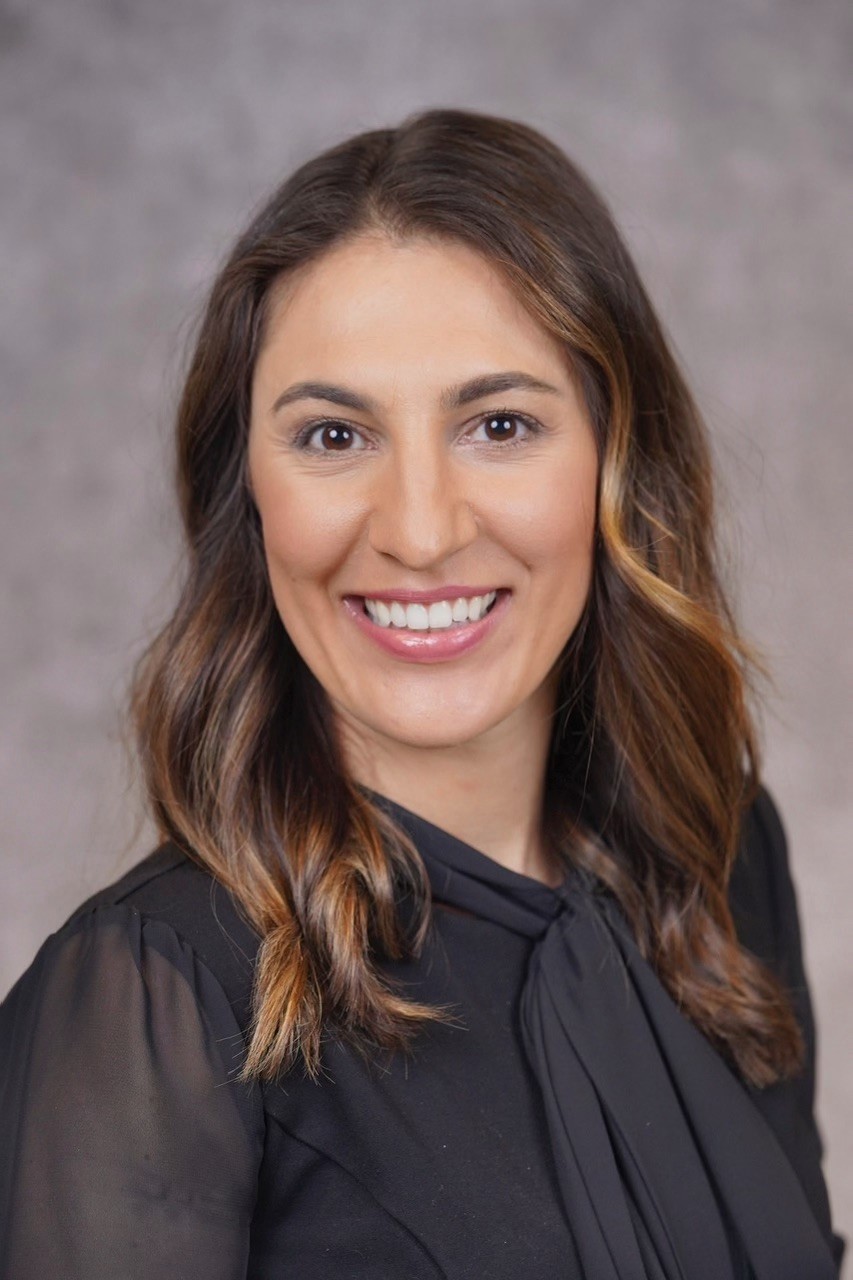 Dr. Erinne Kennedy is an Ohio State University graduate and comes from Middleport, Ohio. She graduated from the Nova Southeastern University’s College of Dental Medicine in 2015. Dr. Kennedy loved everything about dental school, especially being involved in organized dentistry. While in dental school she was involved with ASDA (American Student Dental Association) as a local vice president and national contributing editor. After dental school Erinne attend a one-year general practice residency at the VA Hospital in Baltimore, MD. Erinne has a passion for community health, and is a board certified in public health dentistry after completing a residency at the Harvard School of Dental Medicine (HSDM) in 2018. In May 2019, she graduated as the pioneer student at HSDM with a Master of Medical Science in dental education. She currently practices at the Alliance Dental Center, a dental office focused on wellness, in Quincy, MA.
Dr. Erinne Kennedy is an Ohio State University graduate and comes from Middleport, Ohio. She graduated from the Nova Southeastern University’s College of Dental Medicine in 2015. Dr. Kennedy loved everything about dental school, especially being involved in organized dentistry. While in dental school she was involved with ASDA (American Student Dental Association) as a local vice president and national contributing editor. After dental school Erinne attend a one-year general practice residency at the VA Hospital in Baltimore, MD. Erinne has a passion for community health, and is a board certified in public health dentistry after completing a residency at the Harvard School of Dental Medicine (HSDM) in 2018. In May 2019, she graduated as the pioneer student at HSDM with a Master of Medical Science in dental education. She currently practices at the Alliance Dental Center, a dental office focused on wellness, in Quincy, MA.
She is a contributing editor for Dental Economics, and on the Junior Editorial board for Dental Entrepreneur Women (DeW). Dr. Kennedy‘s professional affiliations include: The American Dental Association, The American Association of Public Health Dentistry, The Massachusetts’s Dental Association, and The Academy of General Dentistry.
Presented by: Adam C. Miller, DDS, MD and Todd R. Miller, PhD
CE Available: 1
Webinar Date: Friday, November 15, 2019
Course Description
Antimicrobials have an enormous impact on the environment and human health. From an international microbiology perspective, what are the implications we are seeing while we navigate through this Era of the Susceptible Host and the interplay between the environment and the average person’s immune system? Microbiology Professor (UW-Milwaukee) Dr. Todd Miller will add expert insight as a guest for Part 2.
We will take a deep dive discussing microbial myths, the question of overtreating and overkilling, and how microbes work off each other and communicate. Relevant case studies will be presented with solutions you can implement as a dental professional to improve the health status of your patients.
Learning Objectives
- Enhance understanding of microbiology and the long-term implications of commonly accepted practices
- Discuss biofilm mechanisms and sharpening of diagnostic skills
- Provide next level thinking about botanical solutions and modulation of the body’s microbiomes for restoring and maintaining oral health
After this webinar, you will be able to implement:
- How to approach the mouth from an immune modulation standpoint and why the impact of stress cannot be overlooked
- Utilize proven diagnostic skills to improve oral health
- Implement simple, clinically-effective botanicals that support modulating oral microbial imbalances
Speaker Bio
Adam C. Miller, DDS, MD 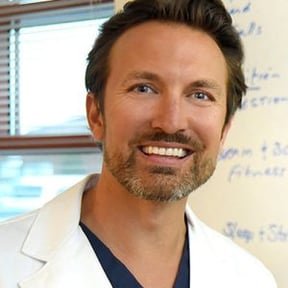 Dr. Miller is board-certified in Maxillofacial Surgery, and Anti-Aging Medicine. He has expertise in integrative medicine, stem cell therapy, skin cancer, sleep apnea, dental reconstruction, hemp as medicine, facial cosmetic and trauma surgery and sedation anesthesia. Since 2005 Dr. Miller has worked in performance medicine - first as an oral and facial cosmetic surgeon and more recently as the Medical Director of ARISE MD, a private integrative medicine and surgery practice. From 2008 to 2014 Dr. Miller founded, then directed an integrative anti-aging center in Malaysia and has lectured to colleagues and the public in ten different countries. He is an associate editor for the Journal of Oral Implantology; serves on medical advisory teams for two major nutraceutical companies; has conducted 2 years of clinical research on hemp oil and is the creator of Intelligent Melatonin. Dr. Miller is passionate about “Returning the Mouth to the Body” by educating practitioners and the public on how to overcome the unreasonable gaps between the dental and medical communities.
Dr. Miller is board-certified in Maxillofacial Surgery, and Anti-Aging Medicine. He has expertise in integrative medicine, stem cell therapy, skin cancer, sleep apnea, dental reconstruction, hemp as medicine, facial cosmetic and trauma surgery and sedation anesthesia. Since 2005 Dr. Miller has worked in performance medicine - first as an oral and facial cosmetic surgeon and more recently as the Medical Director of ARISE MD, a private integrative medicine and surgery practice. From 2008 to 2014 Dr. Miller founded, then directed an integrative anti-aging center in Malaysia and has lectured to colleagues and the public in ten different countries. He is an associate editor for the Journal of Oral Implantology; serves on medical advisory teams for two major nutraceutical companies; has conducted 2 years of clinical research on hemp oil and is the creator of Intelligent Melatonin. Dr. Miller is passionate about “Returning the Mouth to the Body” by educating practitioners and the public on how to overcome the unreasonable gaps between the dental and medical communities.
She is a contributing editor for Dental Economics, and on the Junior Editorial board for Dental Entrepreneur Women (DeW). Dr. Kennedy‘s professional affiliations include: The American Dental Association, The American Association of Public Health Dentistry, The Massachusetts’s Dental Association, and The Academy of General Dentistry.
Todd R. Miller, PhD – Director
 Research in my laboratory is concerned with characterizing factors that regulate human exposure to natu rally occurring or anthropogenic toxins in water or wastewater. I am particularly interested in understanding how microbial communities affect the concentration, fate and toxicity of harmful chemicals in the aquatic environment. The ultimate goal of this research is to formulate models (either numerical or conceptual) of toxin production, release, and degradation in aquatic systems. Since the diversity of biochemical functions performed by microorganisms is only beginning to be realized, this research is both challenging and intriguing.
Research in my laboratory is concerned with characterizing factors that regulate human exposure to natu rally occurring or anthropogenic toxins in water or wastewater. I am particularly interested in understanding how microbial communities affect the concentration, fate and toxicity of harmful chemicals in the aquatic environment. The ultimate goal of this research is to formulate models (either numerical or conceptual) of toxin production, release, and degradation in aquatic systems. Since the diversity of biochemical functions performed by microorganisms is only beginning to be realized, this research is both challenging and intriguing.
Presented by: Erinne Kennedy DMD, MPH, MMSc
CE Available: 1
Webinar Date: Friday, October 11, 2019
Course Description
Literature suggests that when patients have an acidic mouth, or acidic saliva they are at a higher risk for caries. In this webinar, we will explore how we can measure acidity in a patient’s mouth, and their ability to bounce back after an acidic attack (buffer capacity).
Learning Objectives
- Uncover 7-key elements of your patient’s sialo chemistry.
- Specifically, understand, analyze, and interpret the markers of acidity, and buffer capacity.
- Review clinical cases, and design preventative plans to address low acidity and poor buffering capacity in patients who are high caries risk.
After this webinar, you will be able to implement:
- Discuss the relationship between acidity and buffer capacity to dental caries to their patients.
- Identify clinical products that can help patients to reduce acidity and increase buffer capacity.
- Learn to prescribe personalize prevention plans for their patient base to reduce and prevent oral disease.
Speaker Bio
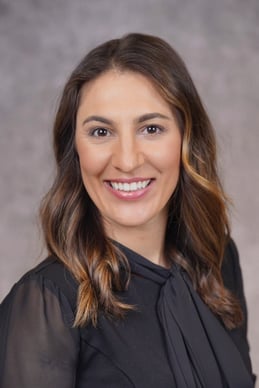 Dr. Erinne Kennedy is an Ohio State University graduate and comes from Middleport, Ohio. She graduated from the Nova Southeastern University’s College of Dental Medicine in 2015. Dr. Kennedy loved everything about dental school, especially being involved in organized dentistry. While in dental school she was involved with ASDA (American Student Dental Association) as a local vice president and national contributing editor. After dental school Erinne attend a one-year general practice residency at the VA Hospital in Baltimore, MD. Erinne has a passion for community health, and is a board certified in public health dentistry after completing a residency at the Harvard School of Dental Medicine (HSDM) in 2018. In May 2019, she graduated as the pioneer student at HSDM with a Master of Medical Science in dental education. She currently practices at the Alliance Dental Center, a dental office focused on wellness, in Quincy, MA.
Dr. Erinne Kennedy is an Ohio State University graduate and comes from Middleport, Ohio. She graduated from the Nova Southeastern University’s College of Dental Medicine in 2015. Dr. Kennedy loved everything about dental school, especially being involved in organized dentistry. While in dental school she was involved with ASDA (American Student Dental Association) as a local vice president and national contributing editor. After dental school Erinne attend a one-year general practice residency at the VA Hospital in Baltimore, MD. Erinne has a passion for community health, and is a board certified in public health dentistry after completing a residency at the Harvard School of Dental Medicine (HSDM) in 2018. In May 2019, she graduated as the pioneer student at HSDM with a Master of Medical Science in dental education. She currently practices at the Alliance Dental Center, a dental office focused on wellness, in Quincy, MA.
She is a contributing editor for Dental Economics, and on the Junior Editorial board for Dental Entrepreneur Women (DeW). Dr. Kennedy‘s professional affiliations include: The American Dental Association, The American Association of Public Health Dentistry, The Massachusetts’s Dental Association, and The Academy of General Dentistry.
Presented by: Adam C. Miller, DDS, MD
CE Available: 1
Webinar Date: Wednesday, September 18, 2019
Course Description
The modern dentist plays a vital role in bridging the gaps between traditional medicine, new medicine, and the dental community. But, that role has huge challenges. Dr. Miller will use case examples from his practices of both integrative medicine and oral surgery to give the AAOSH community a competitive advantage. Participants will be introduced to research on and implementation of novel botanical systems to address microbial and immune-related conditions in the mouth and throughout the body.
Learning Objectives
- Link between oral pathology and core health concerns
- Assessments and testing for the oral microbiome (and related integrative medicine testing)
- Learn how to implement simple, yet effective, novel botanical systems to address microbial and immune-related conditions in the mouth and throughout the body
After this webinar, you will be able to implement:
- A highly effective yet simple approach to organizing oral-systemic consults
- Specific tests and key biomarkers Dr. Miller uses in his practice
- Utilization of proven botanical therapies such as Dentalcidin™ Toothpaste and Dentalcidin™ LS Oral Solution
Speaker Bio
 Dr. Miller is board-certified in Maxillofacial Surgery, and Anti-Aging Medicine. He has expertise in integrative medicine, stem cell therapy, skin cancer, sleep apnea, dental reconstruction, hemp as medicine, facial cosmetic and trauma surgery and sedation anesthesia. Since 2005 Dr. Miller has worked in performance medicine - first as an oral and facial cosmetic surgeon and more recently as the Medical Director of ARISE MD, a private integrative medicine and surgery practice. From 2008 to 2014 Dr. Miller founded, then directed an integrative anti-aging center in Malaysia and has lectured to colleagues and the public in ten different countries. He is an associate editor for the Journal of Oral Implantology; serves on medical advisory teams for two major nutraceutical companies; has conducted 2 years of clinical research on hemp oil and is the creator of Intelligent Melatonin. Dr. Miller is passionate about “Returning the Mouth to the Body” by educating practitioners and the public on how to overcome the unreasonable gaps between the dental and medical communities.
Dr. Miller is board-certified in Maxillofacial Surgery, and Anti-Aging Medicine. He has expertise in integrative medicine, stem cell therapy, skin cancer, sleep apnea, dental reconstruction, hemp as medicine, facial cosmetic and trauma surgery and sedation anesthesia. Since 2005 Dr. Miller has worked in performance medicine - first as an oral and facial cosmetic surgeon and more recently as the Medical Director of ARISE MD, a private integrative medicine and surgery practice. From 2008 to 2014 Dr. Miller founded, then directed an integrative anti-aging center in Malaysia and has lectured to colleagues and the public in ten different countries. He is an associate editor for the Journal of Oral Implantology; serves on medical advisory teams for two major nutraceutical companies; has conducted 2 years of clinical research on hemp oil and is the creator of Intelligent Melatonin. Dr. Miller is passionate about “Returning the Mouth to the Body” by educating practitioners and the public on how to overcome the unreasonable gaps between the dental and medical communities.
Presented by: Erinne Kennedy DMD, MPH, MMSc
CE Available: 1
Webinar Date: Friday, August 9, 2019
Course Description
Simply, there are two types of bacteria that can grow inside your mouth commensal or pathogenic bacteria. When reducing caries and periodontal disease it is important to understand how we can help commensal bacteria flourish in the oral cavity. Ammonia is a great marker of how much healthy bacteria your mouth is growing. In this webinar, we will learn more about measuring ammonia in saliva and what that means for your patients.
After the webinar you will be able to:
- Understand the possible tools and instruments that you can use in your office to better understand your patients salivary chemistry.
- You will be able to interpret the marker of ammonia and ask better questions with your patients.
- Create a preventative plan that will improve your patients oral hygiene, and normal flora.
Learning Objectives
- Discuss 7-key elements of your patient’s sialo chemistry.
- Dissect the meaning, and importance of the bio-markers ammonia in saliva, and its relationship to a healthy oral microbiome.
- Determine clinical recommendations that have the potential to increase the levels of health oral bacteria, and in turn increase levels of ammonia.
Speaker Bio
 Dr. Erinne Kennedy is an Ohio State University graduate and comes from Middleport, Ohio. She graduated from the Nova Southeastern University’s College of Dental Medicine in 2015. Dr. Kennedy loved everything about dental school, especially being involved in organized dentistry. While in dental school she was involved with ASDA (American Student Dental Association) as a local vice president and national contributing editor. After dental school Erinne attend a one-year general practice residency at the VA Hospital in Baltimore, MD. Erinne has a passion for community health, and is a board certified in public health dentistry after completing a residency at the Harvard School of Dental Medicine (HSDM) in 2018. In May 2019, she graduated as the pioneer student at HSDM with a Master of Medical Science in dental education. She currently practices at the Alliance Dental Center, a dental office focused on wellness, in Quincy, MA.
Dr. Erinne Kennedy is an Ohio State University graduate and comes from Middleport, Ohio. She graduated from the Nova Southeastern University’s College of Dental Medicine in 2015. Dr. Kennedy loved everything about dental school, especially being involved in organized dentistry. While in dental school she was involved with ASDA (American Student Dental Association) as a local vice president and national contributing editor. After dental school Erinne attend a one-year general practice residency at the VA Hospital in Baltimore, MD. Erinne has a passion for community health, and is a board certified in public health dentistry after completing a residency at the Harvard School of Dental Medicine (HSDM) in 2018. In May 2019, she graduated as the pioneer student at HSDM with a Master of Medical Science in dental education. She currently practices at the Alliance Dental Center, a dental office focused on wellness, in Quincy, MA.
She is a contributing editor for Dental Economics, and on the Junior Editorial board for Dental Entrepreneur Women (DeW). Dr. Kennedy‘s professional affiliations include: The American Dental Association, The American Association of Public Health Dentistry, The Massachusetts’s Dental Association, and The Academy of General Dentistry.
Presented by: Chris Kammer, DDS
CE Available: 1
Webinar Date: Wednesday, January 16, 2019
Course Description
This webinar will provide an overview of oral systemic health screenings and their importance in a clinical setting. These screenings were also available at the annual Scientific Session in November, and the results are in! Dr. Kammer will discuss the application of the screening results and how they can improve the overall health of both you and your patients.
Learning Objectives
- Introduce and discuss the various types of oral systemic health screenings.
- Explain the relevance of oral systemic screenings in a clinical setting.
- Examine the results of oral systemic screenings in context.
Speaker Bio
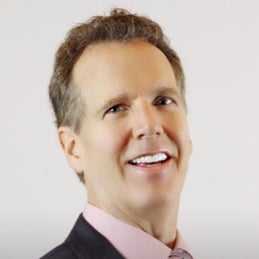 Dr. Chris Kammer is a past president and co-founder of the American Academy for Oral Systemic Health. Dr. Kammer’s work has been presented at numerous dental conferences, conventions, and seminars, and has been published in leading dental journals. He is also on the technology team for Dental Products Report. In recent years he has been a passionate educator in the media and in professional forums about the importance of the oral systemic approach.
Dr. Chris Kammer is a past president and co-founder of the American Academy for Oral Systemic Health. Dr. Kammer’s work has been presented at numerous dental conferences, conventions, and seminars, and has been published in leading dental journals. He is also on the technology team for Dental Products Report. In recent years he has been a passionate educator in the media and in professional forums about the importance of the oral systemic approach.
Presented by: Wayne Sodano, DC
CE Available: 1
Webinar Date: Friday, October 19, 2018
Course Description
Like “leaky gut”, imbalanced flora in the oral cavity leads to systemic dissemination of pathogens, biofilm transport, inflammation and other complications. In pilot studies utilizing botanical medicine, particularly liposomal formulations, improvement in periodontal tissue has been confirmed, and is an exciting development in oral health care.
In this presentation Dr. Sodano will review the role of sIgA in oral microbiome health, and the ways that pathogens and endotoxins from biofilms create systemic consequences, and review this game-changing research.
Learning Objectives
- Understand the role of sIgA in oral health and how botanicals can be used to up-regulate immune response
- Review specific nutrients that impact periodontal health
- Review the mechanism that creates systemic disease states by biofilms, endotoxins and pathogens.
Speaker Bio
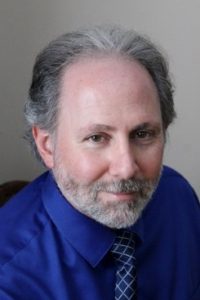 Dr. Wayne Sodano is a Board Certified Chiropractic Internist, Diplomate of the American Clinical Board of Nutrition, Certified Functional Medicine Practitioner, and is Board Certified in Traditional Naturopathy. He is a former instructor of the DABCI program and currently dedicates his time to research and development in the areas of integrative and functional medicine as the Director of Medical Education at the College of Integrative Medicine.
Dr. Wayne Sodano is a Board Certified Chiropractic Internist, Diplomate of the American Clinical Board of Nutrition, Certified Functional Medicine Practitioner, and is Board Certified in Traditional Naturopathy. He is a former instructor of the DABCI program and currently dedicates his time to research and development in the areas of integrative and functional medicine as the Director of Medical Education at the College of Integrative Medicine.
Webinar Date: Wednesday, October 3, 2018
Presented by Patti DeMatteis, RDH, ASDH
CE Available: 1
Course Description
This course will take you through the origin of oral care probiotics, brief science and mechanism of action, how they work, what their benefits are, how they are best used daily and finally, how they will enhance the success of dental treatments and procedures.
Learning Objectives
Attendees will learn
- What are oral care probiotics
- Learn how oral care probiotics work and their mechanism of action
- Learn how the daily use of oral care probiotics will enhance and prolong your patient’s dental health
- Learn how oral care probiotics work symbiotically with other treatments and procedures
- Learn how to implement the use of oral care probiotics into your practice
- Understand the differences between oral care probiotic products
- Recognize how oral care probiotics lead to better patient outcomes
Speaker Bio
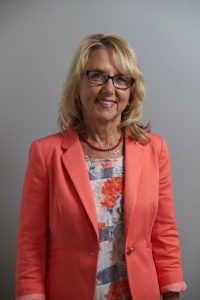 After practicing for twenty-five years as a periodontal therapist, Patti DeMatteis founded Dental Hygiene Excellence (DHE) in 1997. DHE is a clinical coaching company for dental professionals created from a clinician’s perspective as a result of the daily frustrations in dentistry that interrupt our patients receiving the best care possible. Co-Owners and dental hygienists, Patti DeMatteis and Lora Boukheir envisioned transforming dental teams to become well aligned and prepared each day for the work ahead of them so that they could build and retain a practice of happy, healthy patients. Patti is a founding member of The American Academy for Oral Systemic Health, a Preceptor for the Bale/Doneen Method for heart attack and stroke prevention, and a managing partner of the Heart Attack and Stroke Prevention Center of Central Ohio . Her passion for dentistry focuses on comprehensive patient care and helping dental colleagues enjoy their profession in the fast-paced oral -systemic movement to prevention and wellness.
After practicing for twenty-five years as a periodontal therapist, Patti DeMatteis founded Dental Hygiene Excellence (DHE) in 1997. DHE is a clinical coaching company for dental professionals created from a clinician’s perspective as a result of the daily frustrations in dentistry that interrupt our patients receiving the best care possible. Co-Owners and dental hygienists, Patti DeMatteis and Lora Boukheir envisioned transforming dental teams to become well aligned and prepared each day for the work ahead of them so that they could build and retain a practice of happy, healthy patients. Patti is a founding member of The American Academy for Oral Systemic Health, a Preceptor for the Bale/Doneen Method for heart attack and stroke prevention, and a managing partner of the Heart Attack and Stroke Prevention Center of Central Ohio . Her passion for dentistry focuses on comprehensive patient care and helping dental colleagues enjoy their profession in the fast-paced oral -systemic movement to prevention and wellness.
Webinar Date: Wednesday, August 22, 2018
Presented by Susan Maples, DDS
CE Available: 1
Course Description
Dental professionals have the potential to change the health decline of America’s youth. Dr. Susan will explain how integrating infant and pediatric focused programs will bolster your oral-systemic practice like nothing you have yet experienced! Join us and learn how the influx of young, health-seeking families will help you reduce your dependency on insurance and save lives, while increasing your profitability.
Learning Objectives
- Learn why we need to see kids under the age of one, and what we will do at the visit to make a difference for the rest of their lives.
- Discover why we might see a child at three days old to influence their airway health.
- Get a sneak preview into hand-on learning and how we influence lasting behavior change in oral health and nutrition.
- Understand how infant and pediatric Total Health programs will bolster your oral-systemic practice like nothing you have yet experienced!
- See how the influx of young, health-seeking families will help you reduce your dependency on insurance and save lives while increasing your profitability!
- Realize how dental offices have the potential to change the health decline of America’s youth. All of this in one hour!
Speaker Bio
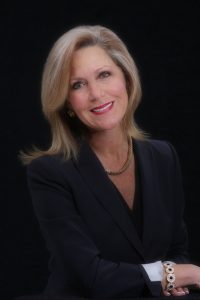 Dr. Susan Maples leads a 30+ year insurance-independent dental practice in Holt, MI. She brings preventive and restorative dental expertise with a passion for mouth-body total health and a master’s degree in business/marketing. She is the author of BlabberMouth! 77 Secrets Only Your Mouth Can Tell You To Live a Healthier, Happier, Sexier Life and the developer of the Hands-On Learning Lab™ and SelfScreen.net. Susan is currently launching Total Health University, an online learning platform for dental teams, exclusively available through Henry Schein.
Dr. Susan Maples leads a 30+ year insurance-independent dental practice in Holt, MI. She brings preventive and restorative dental expertise with a passion for mouth-body total health and a master’s degree in business/marketing. She is the author of BlabberMouth! 77 Secrets Only Your Mouth Can Tell You To Live a Healthier, Happier, Sexier Life and the developer of the Hands-On Learning Lab™ and SelfScreen.net. Susan is currently launching Total Health University, an online learning platform for dental teams, exclusively available through Henry Schein.
Webinar Date: Wednesday, August 1, 2018
Presented by Liz Lundry, RDHMP
CE Available: 1
Course Description
In this webinar, Liz Lundry will help you understand the impact of periodontal pathogens on overall health, utilize systemic risk assessment when treatment planning, and understand the medical necessity to reduce dependence on opioids.
Learning Objectives
Attendees will
- Create customized treatment plans to optimize healing and achieve remission
- Integrate advanced technologies, such as a laser, to make a difference in your practice
- Dispense innovative adjunct therapies to patients included in their treatment plan as an effective option in pain management while reducing or eliminating the need for opioids
- Provide better healing for your patients' common issues with dry mouth, mucositis, chronic aphthous ulcers, cold sores, ortho, sores from dentures, dry sockets, erosive lichen planus and many other dental concerns
- Communicate and implement adjunctive therapies to improve the long-term health of our patients with natural alternatives
Speaker Bio
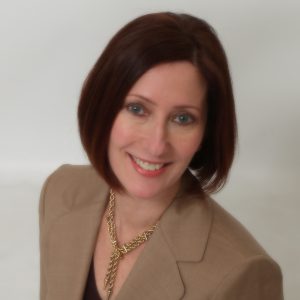 Liz Lundry has been a practicing Dental Hygienist since 1979 when she graduated from Foothill College in Los Altos, California. She has been an in-office trainer since 1988 and earned her Laser Certification in 2000. As a consultant, Liz works with dental practices all over North America through the JP Institute, providing hands-on technology training including lasers and ultrasonics, integration of nutrition, customized in-office coaching and rigorous post-graduate seminars and workshops. She is a published author, and a veteran clinician. As a speaker she has presented to national study clubs and state meetings. Liz also currently works in a general dental practice that offers state of the art cosmetic and laser dentistry.
Liz Lundry has been a practicing Dental Hygienist since 1979 when she graduated from Foothill College in Los Altos, California. She has been an in-office trainer since 1988 and earned her Laser Certification in 2000. As a consultant, Liz works with dental practices all over North America through the JP Institute, providing hands-on technology training including lasers and ultrasonics, integration of nutrition, customized in-office coaching and rigorous post-graduate seminars and workshops. She is a published author, and a veteran clinician. As a speaker she has presented to national study clubs and state meetings. Liz also currently works in a general dental practice that offers state of the art cosmetic and laser dentistry.
Webinar Date: Wednesday, June 20, 2018
Presented by V. Kim Kutsch, DMD
CE Available: 1
Course Description
Dental caries is a complex biofilm mediated disease, significantly influenced by pH, and results in net mineral loss from the teeth. Current research indicates there are multiple known risk factors for the disease including genetic factors. Dental caries also plays a role in systemic disease. Caries management by risk assessment is considered best practice in the prevention and treatment of dental caries disease, and represents a medical model approach. Unfortunately early attempts at caries management were complicated, confusing and not easily implemented in daily practice. This program will review the most current scientific literature on caries management and present a simplified approach that is both efficient and effective in clinical practice. In summary, the program will help the participant answer the questions: How can I successfully implement caries management into my daily practice? How can we effectively help our patients manage this disease?
Learning Objectives
- Upon completion, participant will be able to discuss the current dental caries biofilm disease model and identify the main risk factors.
- Upon completion, participant will be able to describe how dental caries influences systemic disease.
- Upon completion, participant will be able to implement a simple caries management system.
Speaker Bio
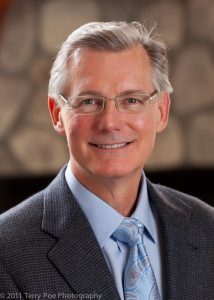 Dr. V. Kim Kutsch completed his DMD at University of Oregon School of Dentistry in 1979. With an expertise in dental caries, he teaches dental teams how to successfully manage the disease. Dr. Kutsch maintains a private practice in Albany Oregon and acts as CEO of Dental Alliance Holdings.
Dr. V. Kim Kutsch completed his DMD at University of Oregon School of Dentistry in 1979. With an expertise in dental caries, he teaches dental teams how to successfully manage the disease. Dr. Kutsch maintains a private practice in Albany Oregon and acts as CEO of Dental Alliance Holdings.
Webinar Date: Wednesday, March 22, 2017
Presented by Jim Hyland, BSc, DDS
CE Available: 1
Course Description
Drs. Bradley Bale/Doneen/Vigerust wrote in the British Medical Journal November 2016 "high risk periodontal pathogens cause heart attacks."
"It means PD due to these high-risk microbes must be treated effectively to reduce the risk of ASVD. The definition of PD must include a diagnosis of the specific underlying pathogens causing the PD".
Understand what these statements mean now that periodontal disease is proven to be a medical condition and what it means for the future of dentistry.
Dr. Bale guarantees his results: "I guarantee you will not have a heart attack while you are under my care or I will refund your money." We can do the same for periodontal disease if we change our approach!
Learning Objectives
- Discover why our present techniques actually contribute to periodontal disease progressing. Change is required.
- Develop a standardized diagnosis and treatment protocol based on their medical/dental/family history, active disease and the clinical condition.
- Learn the most effective way to present the disease to your patients in order for them to accept responsibility for their health
- Understand the need to eliminate and control oral pathogens and learn the most effective method to achieve this.
- Review the information that oral biofilm testing provides and the importance of these tests in providing an accurate diagnosis and treatment plan.
- Discover how to present a treatment plan based on the results of these tests.
- Learn how to link and recommend various antibiotics, delivery methods and maintenance rinses to the clinical signs of periodontal disease and the pathogens identified in the biofilm reports.
Speaker Bio
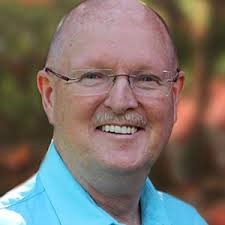 Dr. Hyland is a practicing dentist with many years of experience in general dentistry. A graduate of the University of Toronto, Canada, he has been an active member of both the Canadian and Ontario Dental Associations since 1976. Dr. Hyland has had an active academic life and taught at the Faculty of Dentistry at the University of Toronto, at George Brown College and Seneca College and had a position at the North York Hospital Dental Department. He is an avid attendee of the Crown Council Boot Camps and the philosophy learned from attending these Boot Camps is reflected in his presentation. His passion for patient wellness through the elimination of the Oral-Systemic Risk Factor is evident in his presentations.
Dr. Hyland is a practicing dentist with many years of experience in general dentistry. A graduate of the University of Toronto, Canada, he has been an active member of both the Canadian and Ontario Dental Associations since 1976. Dr. Hyland has had an active academic life and taught at the Faculty of Dentistry at the University of Toronto, at George Brown College and Seneca College and had a position at the North York Hospital Dental Department. He is an avid attendee of the Crown Council Boot Camps and the philosophy learned from attending these Boot Camps is reflected in his presentation. His passion for patient wellness through the elimination of the Oral-Systemic Risk Factor is evident in his presentations.
Webinar Date: Wednesday, August 17, 2016
Presented by Jim Hyland, BSc, DDS
CE Available: 1
Course Description
Despite dentistry’s current standard of care, more than 75% of dental patients have some form of periodontal disease. Despite decades of following conventional wisdom and status quo protocols, periodontal disease is not being accurately diagnosed nor effectively treated in the typical dental office.
What’s more, the inflammatory properties of periodontal disease have been linked to a wide variety of serious medical conditions such as heart attacks, strokes, arthritis, diabetes, low birth weight babies, Alzheimer’s disease and several types of cancer including pancreatic and lung cancers.
That’s why it is imperative for patients to recognize in no uncertain terms that “Pink in the Sink is Health Down the Drain” and why it is critical for dental clinicians to adopt a new disruptive protocol that can finally diagnose and treat periodontal disease in an effective and predictable manner.
In fact, we can now stop periodontal disease in 90% of our patients in just 4 weeks! This webinar will explain how to implement this innovative new protocol and how to achieve this urgently needed elevated standard of comprehensive health care.
Learning Objectives
- Describe the present state of periodontal disease in North America and discuss reasons why this disease is on the increase.
- Provide a medical model for diagnosis and treatment of periodontal disease.
- Demonstrate verbal skills that lead patients to accept interceptive care with a response to “how do I stop the bleeding.”
- Discuss DNA analysis as a prerequisite for successful periodontal disease diagnosis and treatment.
- Underline the significance of “bleeding gums” with respect to overall health.
Speaker Bio
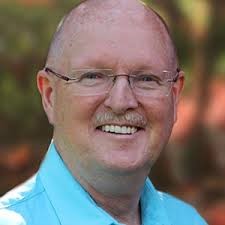 Dr. Hyland is a practicing dentist with many years of experience in general dentistry. A graduate of the University of Toronto, Canada, he has been an active member of both the Canadian and Ontario Dental Associations since 1976. Dr. Hyland has had an active academic life and taught at the Faculty of Dentistry at the University of Toronto, at George Brown College and Seneca College and had a position at the North York Hospital Dental Department. He is an avid attendee of the Crown Council Boot Camps and the philosophy learned from attending these Boot Camps is reflected in his presentation. His passion for patient wellness through the elimination of the Oral-Systemic Risk Factor is evident in his presentations.
Dr. Hyland is a practicing dentist with many years of experience in general dentistry. A graduate of the University of Toronto, Canada, he has been an active member of both the Canadian and Ontario Dental Associations since 1976. Dr. Hyland has had an active academic life and taught at the Faculty of Dentistry at the University of Toronto, at George Brown College and Seneca College and had a position at the North York Hospital Dental Department. He is an avid attendee of the Crown Council Boot Camps and the philosophy learned from attending these Boot Camps is reflected in his presentation. His passion for patient wellness through the elimination of the Oral-Systemic Risk Factor is evident in his presentations.
Webinar Date: Wednesday, June 15, 2016
Presented by Douglas Chase, DDS, FICCMO
CE Available: 1
Course Description
Come join our exploration on how the oral cavity provide a foundation for systemic pathology. Course will discuss the inflammatory Pathophysiology, particularly biofilm, and the new thinking on its impact on the body…not just the teeth. We cover and provide resources, screening techniques, and treatment modalities. We will also touch on Obstructive Sleep Apnea and Cranialmandibular Cervical Disorders as they are inflammatory as well. Discover how to take your clinical care to extraordinary!
Learning Objectives
Attendees will learn:
- Patient Clinical Tactics
- Dental/Medical professions role in this new topic of healthcare
- Medical communication in oral systemic pathology
- Current diagnostics
- Nutrition diet and host modulation
- Proactive Treatment Processes
- Topical/systemic Medications
- Biomarker Testing
- Clinical Equipment
- Medical Communication Techniques
- Patient Communications.
Speaker Bio
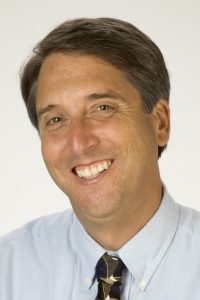 Douglas Chase, DDS, FICCMO graduated from University of the Pacific School of Dentistry in 1979. Dr. Chase has a practice limited to obstructive sleep apnea, cranialmandibular cervical disorders and oral/systemic linkages. Dr. Chase founded Oral Systemic Solutions Inc., is a research editor for MedEdPortal, contributed to articles and books on OSA, CMCD, oral systemic relationships, and lectures nationally and internationally. Dr. Chase was assistant professor at Arthur A. Dugoni School of Dentistry in the Pacific Center for Oral Facial Pain for several years and is a member of ADA/CDA professional groups, the American Academy of Sleep Disorders, American Association of Oral Systemic Health, American Academy of Cranialfacial Pain, IACA, and is a Fellow and regent of the International College of Craniomandibular Orthopedics.
Douglas Chase, DDS, FICCMO graduated from University of the Pacific School of Dentistry in 1979. Dr. Chase has a practice limited to obstructive sleep apnea, cranialmandibular cervical disorders and oral/systemic linkages. Dr. Chase founded Oral Systemic Solutions Inc., is a research editor for MedEdPortal, contributed to articles and books on OSA, CMCD, oral systemic relationships, and lectures nationally and internationally. Dr. Chase was assistant professor at Arthur A. Dugoni School of Dentistry in the Pacific Center for Oral Facial Pain for several years and is a member of ADA/CDA professional groups, the American Academy of Sleep Disorders, American Association of Oral Systemic Health, American Academy of Cranialfacial Pain, IACA, and is a Fellow and regent of the International College of Craniomandibular Orthopedics.
Webinar Date: Wednesday, August 19, 2015
Presented by Ronald McGlennen, MD
CE Available: 1
Description
Inflammation is a natural response to offenses of the body, protecting us from infection, trauma, and other forces of the environment. Too much inflammation, especially occurring over the years and decades is now known to contribute to the causes of atherosclerotic vascular disease, adult-onset (Type 2) diabetes, forms of dementia and even cancer. Join us as we explore how chronic inflammation, and the risk of inflammation associated disease, is best assayed by the use of genetic testing. This lecture will outline the molecular physiology of these gene markers and discuss the translation of that genetic information to detail how inflammation causes atherosclerosis, insulin resistance/diabetes and a model of dementia.
Objectives:
This short lecture seeks to teach
- The description of the molecular genetics of gene expression and the model of how this applies to chronic inflammation
- Details of the mechanisms by which chronic inflammatory cells and extracellular proteins affect end organs to illustrate atherosclerosis, type 2 diabetes and dementia
- Outline ways in which such genetic information can be used to care for patients and construct management plans.
Speaker Bio
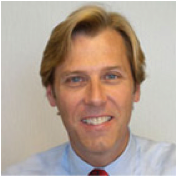 Dr. McGlennen is President and Medical Director of Access Genetics and OralDNA Labs. He has published more than 70 scientific articles and book chapters and has served as the editor of five journals. He holds 9 issued and pending patents. He is board certified in Anatomic and Clinical Pathology and also by the American Board of Medical Genetics, with a Specialty in Clinical Molecular Genetics. He is internationally recognized as an expert in Molecular Biology and Genetics. His focus in research has been on reducing the complexity of gene based testing, including DNA chip technology and simple analytic instrumentation to better serve the community laboratory. He has served on a series of governmental and regulatory committees focused on the growth of the field of molecular diagnostics.
Dr. McGlennen is President and Medical Director of Access Genetics and OralDNA Labs. He has published more than 70 scientific articles and book chapters and has served as the editor of five journals. He holds 9 issued and pending patents. He is board certified in Anatomic and Clinical Pathology and also by the American Board of Medical Genetics, with a Specialty in Clinical Molecular Genetics. He is internationally recognized as an expert in Molecular Biology and Genetics. His focus in research has been on reducing the complexity of gene based testing, including DNA chip technology and simple analytic instrumentation to better serve the community laboratory. He has served on a series of governmental and regulatory committees focused on the growth of the field of molecular diagnostics.
For nearly four decades Dr. Samaha has based her practice on the principles of Total Body Wellness through Complete Health Dentistry. Her pioneering practice focuses on the advanced, non-surgical treatment of periodontal disease, and all aspects of the Oral Systemic Link.
Webinar Date: Wednesday, July 15, 2015
Presented by Jim Hyland, DDS, BSc & Anne Bosy, MSc
CE Available: 1
Description
Breaking the OSL predictably by treating gum disease quickly and predictably in two weeks*.
Tilting the Balance in Favor of Health before we create the perfect smile.
Creating the perfect smile is the most common dental theme promoted on websites and by dental practices worldwide. However if the foundation tissues are not healthy it cannot be maintained
A study published in 2014 with data from the National Health and Nutrition Examination Survey estimated that over 47% of the sample population representing 64.7 million adults aged 30 years and older had mild, moderate or severe periodontitis and 64% of adults 65 years or older had either moderate or severe periodontitis1. When data includes gingivitis, 75% of the North American population has some form of periodontal disease. Since there is only a 25% success rate in keeping patients’ smiles healthy, an outsider reading these statistics would conclude there is a crisis in how we approach treating periodontal disease and the Oral Systemic Link. What are the alternatives? Change is needed!
In this presentation Oravital will address how to break the link between oral and systemic disease by treating the cause not the symptoms. The Oravital system identifies and controls periodontal infections and the systemic effects. Serious infections that result from oral and systemic bacteria such as P gingivalis and spirochetes are explored. Periodontal disease is life threatening and needs to be presented this way to all patients. Prevention is key but how do we engage patients in:
- Motivating them to want to perform effective biofilm disruption techniques especially since flossing is now not recommended "except for healthy mouths and then when no other method will clean interproximally without trauma". What are the effective alternatives they will and should use? ( J.Clin Periodontol. 2015)
- Eliminating bacteria that cause this infection as we do for any other infection we treat
To help our patients achieve oral health and reduce systemic risk factors, both the dentist and the patient must accept that “only a little bleeding” in the oral cavity parallels the seriousness of this symptom when it occurs elsewhere in the body, and only zero bleeding is acceptable. We will discuss how to use a non systemic more effective antibiotic rinses and a less expensive, multiple site, subgingival sampled oral microbiology testing to control periodontal disease predictably within a two week time period. Let’s engage our patients in effective biofilm disruption techniques they will commit to using regularly. Once we master this skill of achieving zero or close to zero bleeding in our patients, we will truly tilt the balance in favor of a healthy body.
This course will address the following topics:
- Objective diagnostic techniques that generate patient compliance, including the use of the Papillary Bleeding Index
- Microbiological testing as a component of diagnosis
- Effective treatment of periodontal disease and oral breath odour with antibiotic rinses that includes an 87% reduction in bleeding and up to 86% change in periodontal pockets.
- Motivating the patient to use effective biofilm disruption techniques
- Balancing the oral biofilm for a healthy mouth and healthy body
* 90% of the time
About the Speakers:
Dr Jim Hyland BSC, DDS: President of Oravital Inc.
Dr. Hyland graduated from the U of T in 1976 and has always been one of the first to implement the latest techniques, research and philosophies in oral care.
Dr. Hylands experience, in addition to private practice, includes teaching at U of T Faculty of Dentistry, Seneca College, George Brown College as well as the dental staff member of the North York Hospital.
He regularly lectures and writes on a variety of topics related to diagnosing and treatment of periodontal disease as an oral infection, interceptive preventive care, decreasing the oral systemic risk and breath odour.
In 2014 he launched www.GumGuardians.com to educate the public about the connection between the health of their gums and physical wellbeing and to provide the latest information about how to prevent and to treat gum disease and breath odour.
Anne Bosy: MSc, MEd, RRDH: Senior Vice President, Scientific Affairs at Oravital Inc.
Anne is an educator, published researcher and speaker who has presented on the topic of breath odour at the ODA, ADA, Yankee Dental Congress as well as at conferences in Europe and Japan. She is the originator of the Oravital System and at present, the Senior Vice President at Oravital Inc where she is responsible for antibiotic rinse development and the microbiology laboratory. Prior to this position, Anne was a professor at George Brown College.
Webinar Date: November 19, 2014
Presented by Dr. Tom Nabors
CE: Not Available
Learning Objectives:
- To examine both medical and dental peer-reviewed literature surrounding specific oral bacteria, their interaction with local tissues, their ability to evade the immune system, and their unique ability to “turn-on” different inflammatory pathways.
- To help the clinician interpret the risks in both oral and systemic health that are associated with specific oral pathogens that lead to periodontitis and implant infections.
- To examine peer-reviewed literature from medical and dental sources that reveal the connection between the dissemination of specific oral pathogens and cardiovascular risks including hypertension, ASVD, heart attack, and ischemic stroke.
Speaker Bio:
Dr. Nabors received his Undergraduate education at Lipscomb University and Mississippi State University, majoring in biology and chemistry. He received his Dental School Education at the University of Tennessee College of Dentistry.
He was the founder of OralDNA Labs and writes many articles for a number of peer-reviewed dental publications as well as several peer-reviewed continuing education courses.
Dr. Nabors speaks to universities, national & state dental organizational meetings as well as physician groups: He speaks on a variety of topics including our topic today as well as “The role of the dental team in preventing heart attacks and stroke.” And, he serves on advisory boards for a number of companies.
Webinar Date: March 26, 2014
Presented by Duane Keller, DMD
CE: Not Available.
This course will cover biofilm etiology of oral and systemic diseases while addressing the principles of biofilm management and the AMA/ADA wound guidelines. We will also discuss how oral pathogens affect systemic inflammation and how oral control of these pathogens may lead to systemic improvements.
Objectives:
1) Wound etiology
2) Wound treatment guidelines
3) Wound management and systemic effects
Speaker Bio:
Duane C. Keller graduated from Washington University School of Dental Medicine in 1976 and has maintained a successful private practice in St. Louis, MO since then. In additional to general dentistry, Dr. Keller works with physicians and physical therapists to provide non‐surgical treatment for TMD patients in chronic pain. Dr. Keller also works with physicians whose patients have symptoms of periodontal disease. These partnerships have been especially valuable for patients at risk for or diagnosed with systemic illnesses. Dr. Keller has been lecturing to national and international audiences for over twenty years. He has published more than 35 articles in professional journals, most recently an article in The Journal of Clinical Dentistry, and has patented numerous dental appliances and treatment methodologies. In 2004, the FDA cleared his Perio Tray® for the placement of solutions in periodontal pockets
Webinar Date: February 19, 2014
Presented by Thomas W. Nabors, DDS, FACD
CE: Not Available.
Description
There appears to be much confusion regarding the use of systemic antibiotics in the management of periodontal infections. Questions arise at the clinical level such as: Should I use a systemic antibiotic? if so, for which patient scenario? Which antibiotic should I use? And, for how long? And finally, is the use of a systemic antibiotic more beneficial for the patient than not using one based on perceived risks?
An important randomized controlled clinical trial that has recently been published will be reviewed, along with other data, to help answer these questions.
Learning objectives:
1. The Why: To review the current literature of a randomized clinical trial to determine advantages
2. The When: To help the clinician determine which antibiotic(s) are most appropriate.
3. The How: when to use and for how long.
4. Supplemental: To review current literature regarding Chlorhexidine
Webinar Date: August 21, 2013
Presented by Melissa Larsen
CE: Not Available.
Description
For decades health care leaders have been working to connect the dots between oral health and cardiovascular / total body health, in a manner that can be easily communicated to patients while having a lasting impact on their oral health decisions.
It's no secret that an estimated 85% of all patients experiencing a cardiac related event have zero symptoms prior to the event itself.
In 2013 the Dental Cardio Group sheds new light on this pressing subject. A new device provides a 3 minute non-invasive, in-office screening examining the overall cardiovascular and nervous system health if each patient. This will allows practices to further assist the long term health and well being of their patients. Additionally allowing deliverable treatment plans documenting significant improvements over initial screening indicators.
Learning Objectives:
- How to more effectively and quickly educate their patients on the oral-systemic link
- How to increase patient referrals and compliance
- How to foster better relationships with physicians in their community
- How to increase practice revenue through diagnostic testing
Webinar Date: April 17, 2013
Presented by Duane Keller, DMD, FAGD
CE: Not Available.
Description
Periodontal bacteria evolve at a much faster rate than human immune capabilities. The process of host responses is explained to facilitate a better understanding of the inflammatory process and opportunities for managing these situations, including an oral oxygen therapy that is often used in chronic wound clinics.
Learning Objectives
- Understand how periopathogens affect local and systemic inflammation.
- Recognize the pathways of invasion.
- Learn oxidative and oxygenating treatments for the biofilm causing disease.
Speaker Bio
Duane C. Keller graduated from Washington University School of Dental Medicine in 1976 and has maintained a successful private practice in St. Louis, MO since then. In additional to general dentistry, Dr. Keller works with physicians and physical therapists to provide non‐surgical treatment for TMD patients in chronic pain. Dr. Keller also works with physicians whose patients have symptoms of periodontal disease. These partnerships have been especially valuable for patients at risk for or diagnosed with systemic illnesses. Dr. Keller has been lecturing to national and international audiences for over twenty years. He has published more than 35 articles in professional journals, most recently an article in The Journal of Clinical Dentistry, and has patented numerous dental appliances and treatment methodologies. In 2004, the FDA cleared his Perio Tray® for the placement of solutions in periodontal pockets.
Topics
- Human Microbiome and Dysbiosis
- Caries - Human Microbiome and Dysbiosis
- Yeast Management and Gut Health - Human Microbiome and Dysbiosis
- Oral-Systemic Links to Periodontal Disease
- Pregnancy and Periodontal Disease
- Periodontal Disease and Secondary Joint Infection
- Full Mouth Disinfection Protocol
- Caries: A Preventable and Treatable Disease
- Self-Prophy
- Salivary Diagnostics: Current and Future
- Prepregnancy, Pregnancy and Periodontal Disease
Course Menu
- Periodontal Disease and Biofilm Diseases of the Mouth
- Metabolic Health
- Lifestyle
- Cancer and Autoimmune Disorders
- Adult Airway and Sleep Disorders
- Pediatric Health, Airway, Sleep Disorders, and Breathing
- Behavior Influences, Increasing Health Literacy, and the Psychology of Healing
- Environmental Influences
- Cardiovascular Health
- Genetics
- Brain Health
- Gut Health and Microbiome
- Success for the Oral Systemic Practice
How to obtain CE Credit
For courses that are available for Dental Continuing Education Credit (CE), you must watch the full recording (skipping ahead will not count). Once you have watched the full recording, the CE code will automatically populate within your AAOSH dashboard under the "Continuing Education" tab. This continuing education area will keep track of all CE received from AAOSH online courses.
How to obtain CME Credit
Continuing Medical Education Credit (CME) is coming soon!
